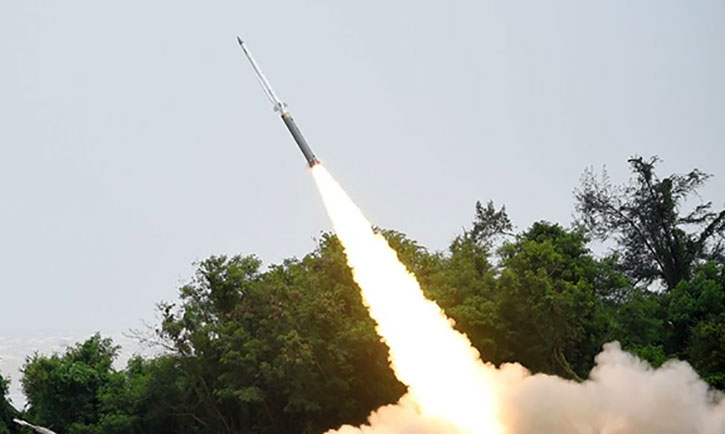
The Indian Defense Research & Development Organization (DRDO) completed a first test flight of an advanced propulsion system that promises to enhance the range and agility of air-to-air (AAM) and surface-to-air missiles (SAM). The Solid Fuel Ducted Ramjet (SFDR) developed under a joint Indo-Russian R&D project achieved a speed of Mach 3 on its first flight. SFDR uses a ramjet propulsion system to react with the solid propellant as air, that acts as oxidizer flows through a solid propellant duct. The design of the SFDR propulsion allows for throttling up and down, enabling the missile to increase the speed as it reaches the terminal phase of the flight, or when sharp turns are required in pursuit of highly maneuvering targets.
Compared to conventional rockets that must carry a propellant and oxidizer – Ramjet, like a jet engine, uses the air as an oxidizer thus eliminates the weight of that fuel. Therefore, such missile can carry more fuel or use a smaller propulsion unit. With more fuel stored on board, longer burn time is achieved, resulting in higher velocity, that enabling missiles to fly farther and maintain good kinematic performance through the endgame, being able to chase a target through a series of high G maneuvers. Relying on solid propellant the system avoids flameout risk through such maneuvers, that jets engines or ramjets are subjected to.
SFDR propulsion is a key technology for the development of extended range missiles such as surface-to-air and long-range air-to-air missiles. Typical weapons utilizing such propulsion are the MBDA Meteor, Chinese PL-12D and the US Triple Threat Terminator (T-3) missile developed by Boeing as a possible AMRAAM successor. The introduction of ramjet propulsion enabled designers in Europe, Russia, and China to extend missile range from 100 km to 200 km, and achieve a maximum speed of Mach 3 – 4, without significantly increasing the missile’s diameter and length. In some applications, ramjets were also used to accelerate hypersonic vehicles.
Possible uses for the Indian SFDR are in future variants of missiles, including an advanced version of the ASTRA beyond visual range AAM (BVRAAM) expected to extend the Astra Km 1 75 km range to 150 km in the Mk-3 version. According to the DRDO, the SFDR has a range of 120 km with a speed range of 2.3-2.5 Mach. Unbound by the diameter of aerial weapons, a ground-launched SFDR would accelerate a missile over 250 km. A potential application of the Indo-Russian SFDR is extended range SAM – such as the futuristic Indian SAM-X.
As the Ramjet is most effective at supersonic speed, this engine is often used in combination with strapped boosters (particularly in SAM) or integrated boost phase (AAM), accelerating the missile to supersonic speed where the ramjet kicks in. The variant tested recently in India was launched from a ground-based test rig using a booster.



















